Featured Text
Statement on Wire Sculpture
Manuscript, 1929. Calder Foundation, New York. Typed and annotated by Jean Davidson.
Manuscript, 1929. Calder Foundation, New York. Typed and annotated by Jean Davidson.
January–February 1929.
As I feel that that might be of interest to you I take the liberty of writing to you myself to give you the past history of this wire sculpture (or three-dimensional line drawing)—at least as far as I am concerned.
In the Spring of 1926 I made some toy animals of curtain rods, broom handles, etc., and wire. Later, a few dolls, which I animated. The first thing totally in wire was a sundial—a vertical piece of wire which I decorated with a crowning cock. Then I made a flat mask—a portrait—and a few devices to hold cigarettes. As I had always worked with tools, and indeed, graduated from an engineering college, I found no particular difficulty with this medium.
Coming to Europe for the first time that July (1926) I suspended painting for quite some time and have not really gotten back to it yet. However, in the Winter of 1927–1928 I made some more toys for a friend to take home as gifts, and having shown them to De Creeft, a Spanish sculptor with a very acute sense of humor, I was urged by him to make some more toys and to expose them at the Salon des Humoristes. I did this and then began to make more elaborate toys, with articulation, in which the movements got more and more realistic, always adhering to the same basic materials. In this way I have developed quite an elaborate circus of which animation is one of the chief characteristics.
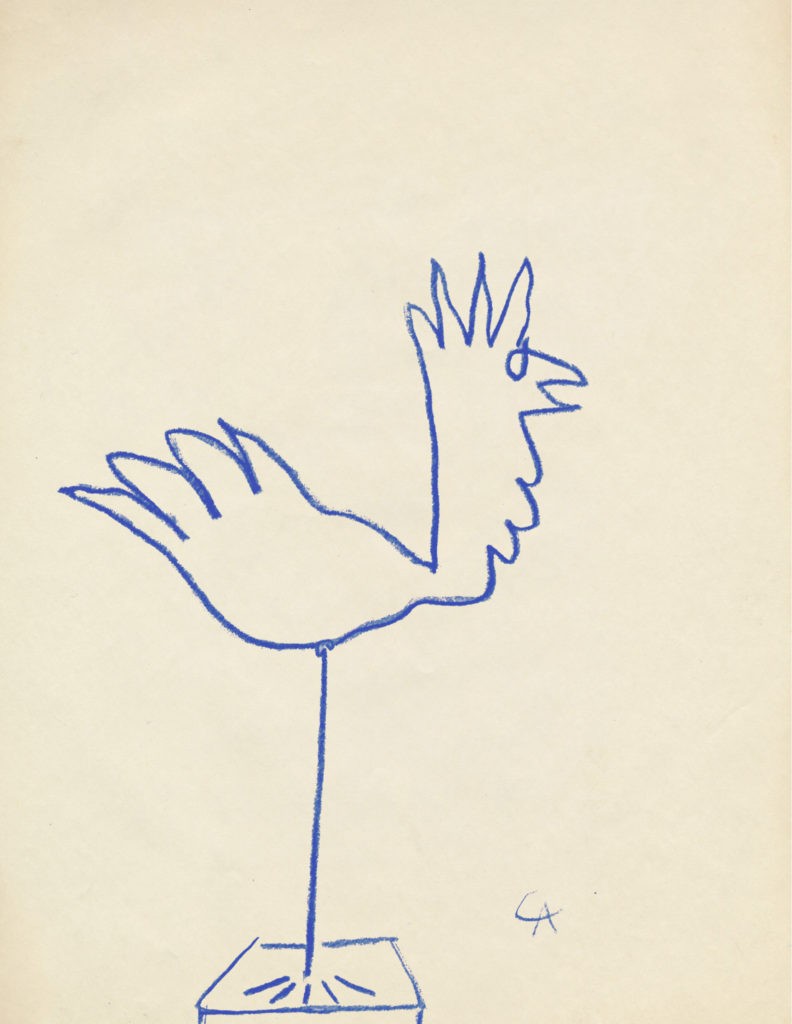
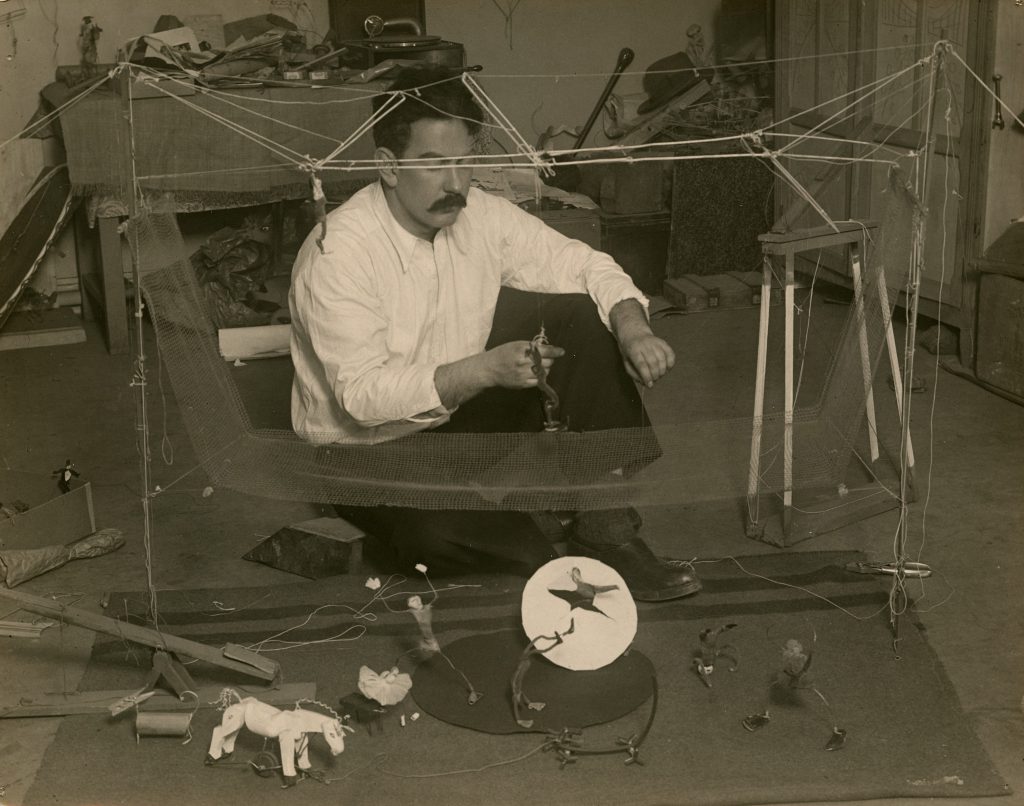
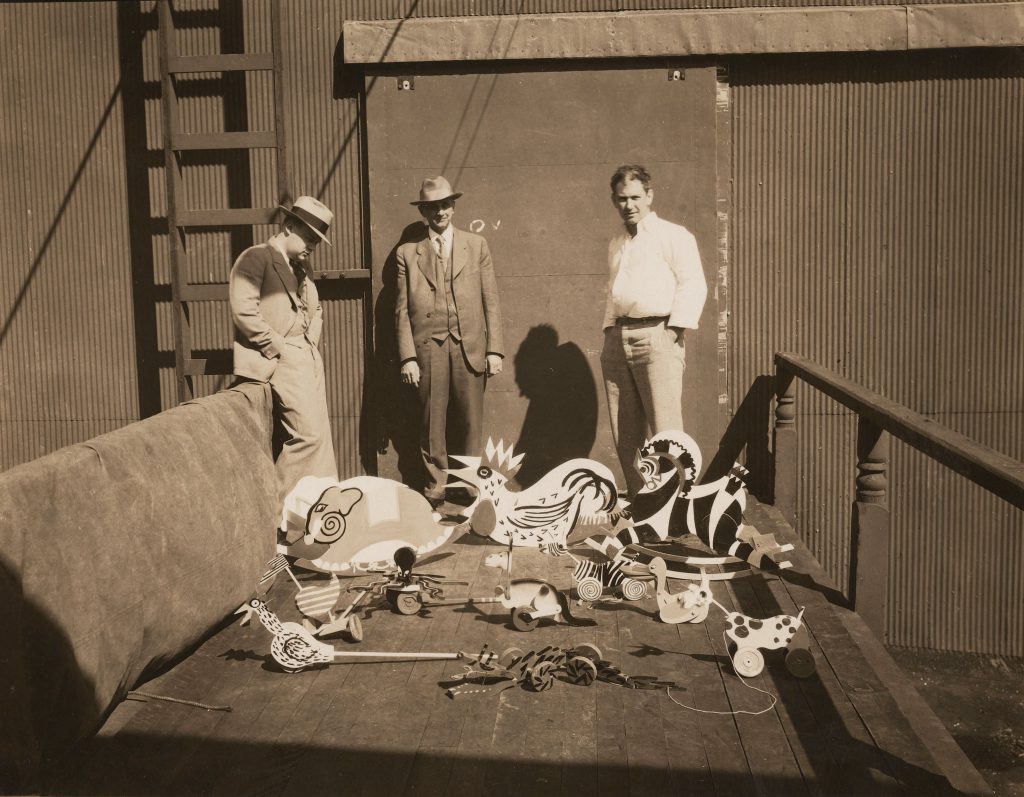
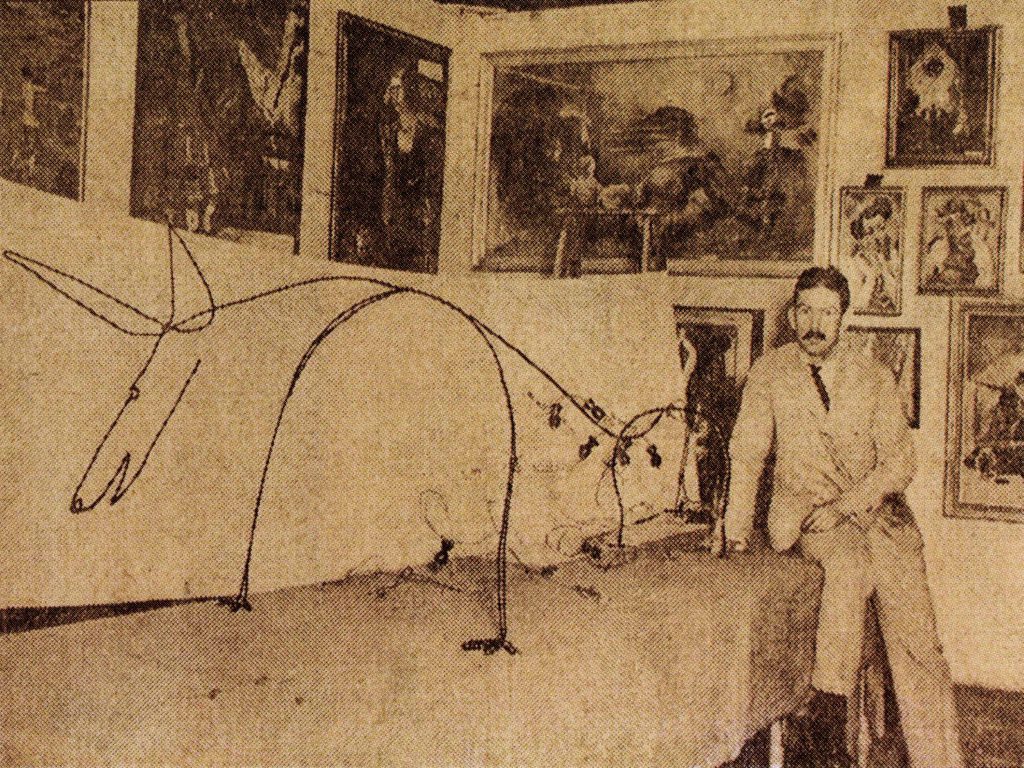
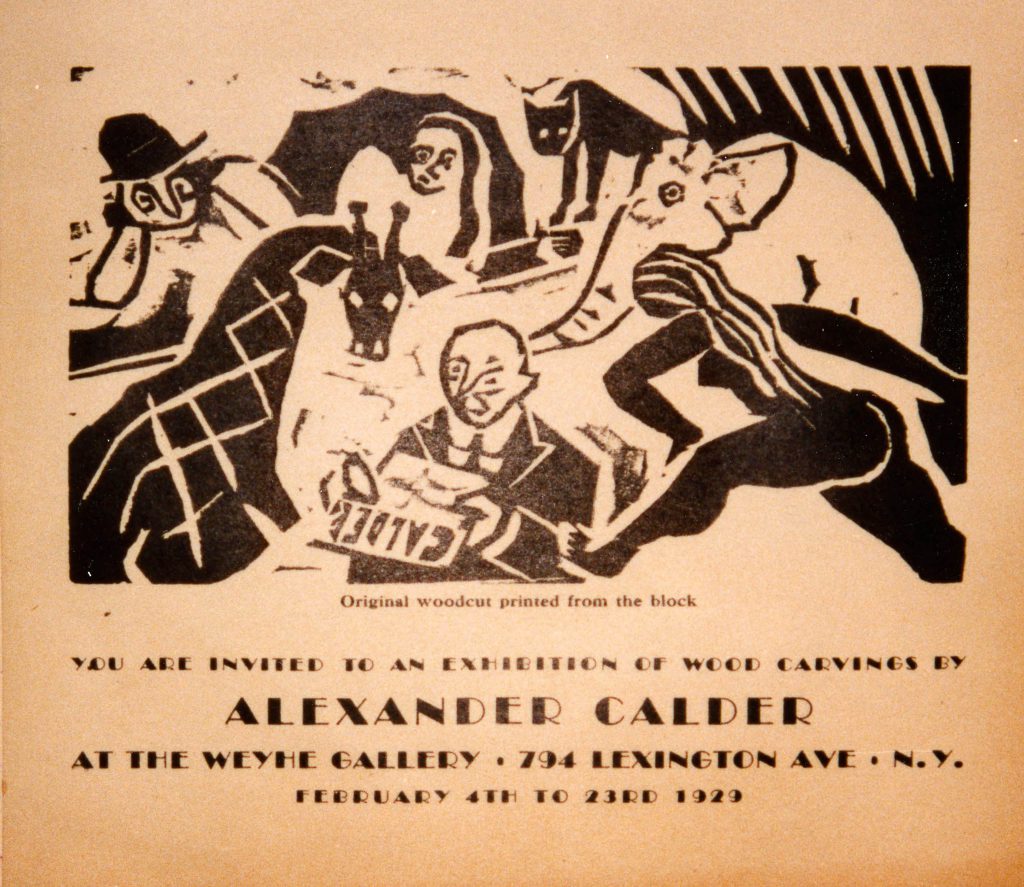
At the same time I began trying figures wholly in wire, and at that time made 2 or 3 which are in my present show at the Galerie Billiet, 30 rue de la Boetie (Jan.25–Feb.7.1929).
Taking my toys to New-York in the fall of 1927 in the hope of merchandising them, I finally connected with the Gould Manufacturing Co. of Oshkosh, for whom I made a whole set of new designs in toys.
During the Winter I had a show of wire sculpture at the Weyhe Gallery, New-York City, which proved quite a success, and also exposed “Romulus and Remus” and “Spring” at the Independants in New-York (At the present moment “Romulus and Remus” and the other, now “Printemps” are exposing their virtues and vices at the Independants at the Grand Palais, Paris).
At that time (last Spring) I did not consider this medium to be of any signal importance in the world of art; merely a very amusing stunt cleverly executed. So I began to carve wood, and worked all Spring, Summer and fall, on sculptures in wood which are to be shown at Weyhe’s (New-York) commencing February 4, 1929.
However, wishing to return to Paris, I felt it would be quite justifiable to have an exhibition here, where “clever stunts” are highly appreciated, so I came over 3 months ago and set to work, carving wood and twisting wire.
These new studies in wire, however, did not remain the simple modest little things I had done in New-York. They are still simple, more simple than before; and therein lie the great possibilities which I have only recently come to feel for the wire medium.
Before, the wire studies were subjective, portraits, caricatures, stylized representations of beasts and humans. But these recent things have been viewed from a more objective angle and although their present size is diminutive, I feel that there is no limitation to the scale to which they can be enlarged.
There is one thing, in particular, which connects them with history. One of the canons of the futuristic painters, as propounded by Modigliani, was that objects behind other objects should not be lost to view, but should be shown through the others by making the latter transparent. The wire sculpture accomplishes this in a most decided manner.
Galerie Billiet-Pierre Vorms, Paris. Sculptures bois et fil de fer de Alexandre Calder. Exhibition catalogue. 1929.
Jules Pascin, Statement
Solo Exhibition CatalogueBehne, Adolf. “Plastik als Luftakt: Alexander Calder in der Galerie Neumann-Nierendorf.” Welt Am Abend, 11 April 1929.
NewspaperGalerie Percier, Paris. Alexandre Calder: Volumes–Vecteurs–Densités / Dessins–Portraits. Exhibition catalogue. 1931.
Fernand Léger, Introduction
Solo Exhibition Catalogue“Objects to Art Being Static, So He Keeps It in Motion.” New York World-Telegram, 11 June 1932.
NewspaperSoon after moving to Paris in 1926, Calder created his Cirque Calder. Made of wire and a spectrum of found materials, the Cirque was a work of performance art that gained Calder an introduction to the Parisian avant-garde. He continued to explore his invention of wire sculpture, whereby he “drew” with wire in three dimensions the portraits of friends, animals, circus themes, and personalities of the day.